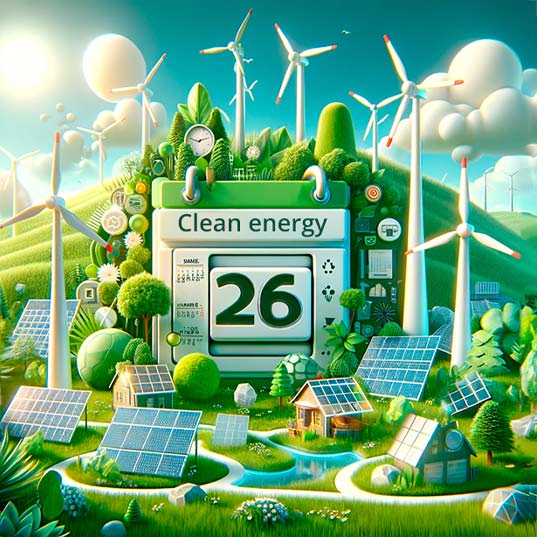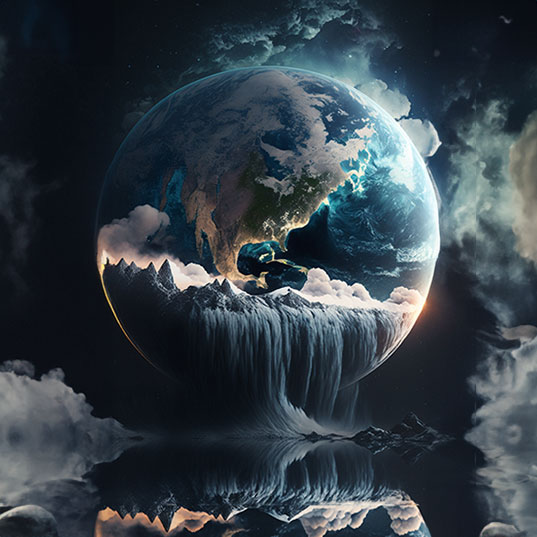World Oceans Day 2024: awakening new depths
World Oceans Day is being celebrated on 8 June with the aim of raising awareness of the importance marine environments have on our lives.
On 8 June, we celebrate World Oceans Day, when the United Nations invites us to reflect upon the important of oceans on human survival and all life on Earth.
Despite its significance, we have only explored some 10% of these vast masses of water. That is why this year’s theme has been named “Awaken New Depths”. Although we know little about the oceans compared to their immensity, we do know that our actions have obvious consequences on all that water.
There’s no time to continue ignoring the consequences of our activities and of climate change on the oceans.
The UN is calling on us this day to work together to mitigate the effects of climate change on the oceans, restore their vitality and stop polluting them through our actions. The oceans not only produce 50% of the planet’s oxygen, they are also home to the majority of its biodiversity and the main source of food for millions of people worldwide.
At Sustainability For All, we have analyzed several issues affecting the conservation of the oceans and their flora and fauna: climate change, rising sea levels, pollution, fishing, acidification of the water, etc., and we have interviewed the world’s most influential oceanographers on the importance of sustainable regeneration in saving the oceans. For more, take a look at the following gallery:
What I will learn from this article?
- Garbage patches
- Hunting in the oceans
- Destructive fishing
- Acid rain
- The water cycle
- Conversations with Sylvia Earle
Garbage patches
 In recent years you may have heard mention of the Great Pacific Garbage Patch and 4 such islands of trash that float over Earth’s oceans. You’ve surely seen photos of an enormous accumulation of waste of all kind on the surface of the sea. These stains on the oceans extend for some 1.5 million square kilometers. The biggest occupies a surface 3 times the size of France and it is estimated that it contains over 2 trillion plastic items and pieces, 10 times more than there are stars in the Milky Way.
In recent years you may have heard mention of the Great Pacific Garbage Patch and 4 such islands of trash that float over Earth’s oceans. You’ve surely seen photos of an enormous accumulation of waste of all kind on the surface of the sea. These stains on the oceans extend for some 1.5 million square kilometers. The biggest occupies a surface 3 times the size of France and it is estimated that it contains over 2 trillion plastic items and pieces, 10 times more than there are stars in the Milky Way.
Overall, the 5 big patches contain more than 5 trillion plastic items weighing around 270,000 tons.
And they never cease to grow, since every year more than 8 million tons of plastic are thrown into the oceans, causing the deaths of 100,000 marine species and entering the global food chain.
Measures that can be taken against hunting in the oceans
The sustainability of our oceans is closely linked to the state of the living creatures inhabiting them. There are many species in danger due to human actions, such as the massive hunting of dolphins for food (and above all for sale to dolphinariums), whales for their meat or use in cosmetics, and sharks fished exclusively for their fins.
Destructive fishing vs sustainable fishing
When we talk about destructive fishing, we are referring to the devastation of sea resources, overexploitation of species, and indiscriminate (non-selective) fishing. The acidification of the oceans is increasing at a dizzying pace, contributing to the disappearance of plant and animal species, which, together with overexploitation and destructive fishing methods, undermines the health of our seas.
What is acid rain?
Acid rain is one of the consequences of atmospheric pollution and negatively affects the oceans. It is produced when polluting emissions from factories, cars and heating boilers and the like enter into contact with the humidity of the atmosphere. These emissions contain nitrogen oxides, sulfur dioxide and sulfur trioxide, nitric acid and sulfuric acid. The process also occurs naturally in volcanic eruptions.
Do you know the water cycle?
The natural hydrological cycle is becoming affected by changes in the climate, excessive water extraction, and pollution. Acidification of the oceans is a real, present problem which we must avoid.
Conversations with Sylvia Earle 200 meters down
“We are the cause of the problem. This is fortunate in that we also have the solutions… Let us restore everything we can while we have the opportunity,” the inspiring scientist says in an interview with journalist Amaro Gomez-López.
From their conversation deep down in the immense Pacific (200 meters below the surface), we created an amazing three-episode series also including unique images of the Galapagos Islands. Discover them embedded in this article.
Source:







